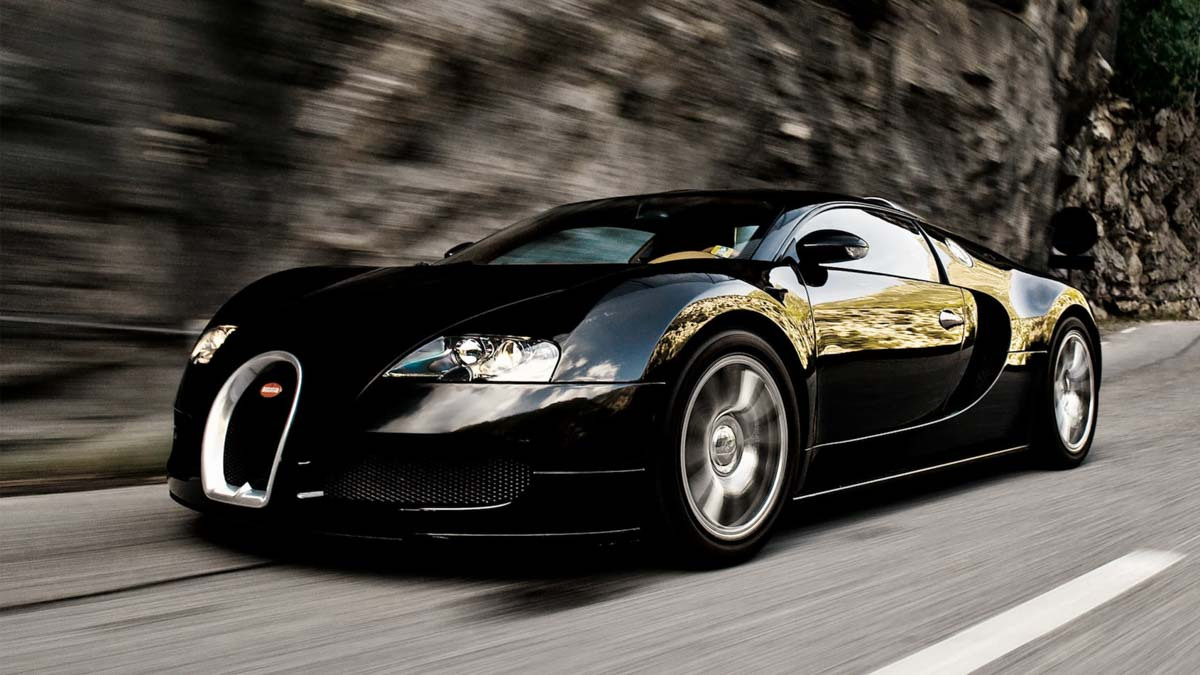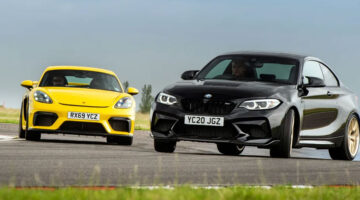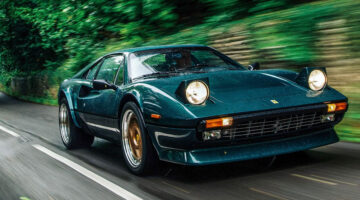Crazy fast and madly expensive – these are our top twelve best hypercars of all time
With increasing concerns about emissions, air quality and the ‘speed kills’ mantra ever more pervasive within Government and sections of the press, you might expect that the hypercar is living on borrowed time. Indeed, you could well conclude that it has been ever since the McLaren F1 burst onto the scene with its headline-grabbing 240.1mph top speed.
Fortunately this doesn’t seem to be the case and, if anything, the hypercar is currently enjoying something of a renaissance with the likes of Bugatti and Koenigsegg setting top speed and acceleration records seemingly just for the hell of it.
The truth of the matter is that hypercar buyers have never had it so good with manufacturers embracing more modern and race-derived technologies to ensure the current crop of hypercars are just as desirable and mind-bogglingly fast as we’ve come to expect.
Progress in the most spectacular car class shows no signs of abating. The likes of the Aston Martin Red Bull Valkyrie and the Mercedes-AMG Project One are still in development, Gordon Murray’s T50 is due within the next couple of years (and looks to trade outright numbers for much-needed driver involvement), Lotus has its Evija electric car on the way, then there are numerous others – the SSC Tuatara and its much-contested top speed, Pininfarina’s Battista, Rimac’s Concept Two… rich pickings for the hyper-rich.
With one-upmanship being the very essence of the hypercar sector, we’ve put our heads together and thrashed out a list of the 10 best of the breed. The best hypercars ever to devour a runway like a jet fighter, collect an Abu Dhabi speeding ticket or rattle an expensive Kensington mantelpiece with a 2am exhaust roar…
Best hypercars 2019
1. Bugatti Chiron
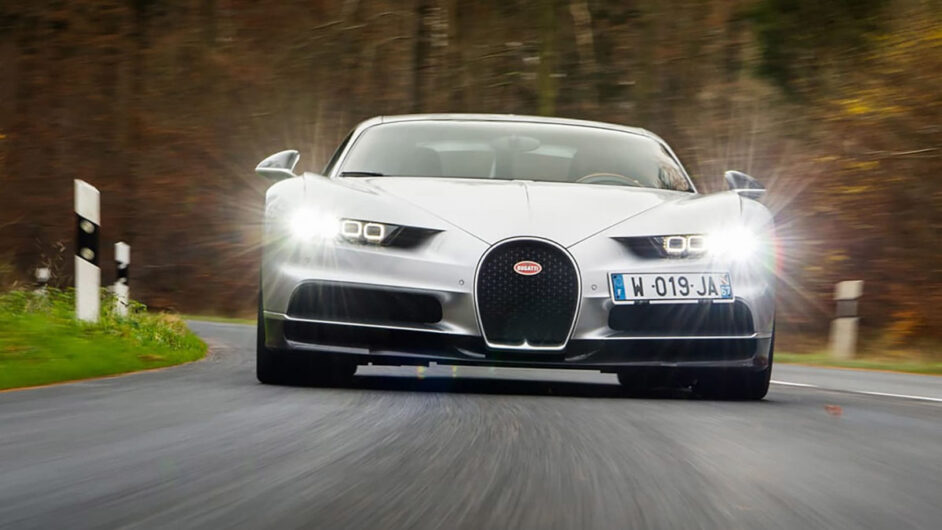
If you accept that first and foremost a hypercar has to have epic performance then it should be no surprise that the Chiron is sitting at the top of our hypercar tree. It’s mindwarpingly savage in its acceleration – nothing with four wheels connects corners quite as effectively – perhaps unsurprising given the numbers generated by its quad-turbo W16.
8-litres in capacity and developing an eye-watering 1479bhp and 1180lb ft of torque, the Bugatti Chiron dispatches the 0-62mph segment in 2.5sec before crashing through the 124mph barrier a scant four seconds later. Top speed is limited to 261mph, but in August 2019 Bugatti did take a modified variant to 304mph with Andy Wallace at the helm, illustrating the car’s potential.
That the Chiron has the high-tech underpinnings to match its outrageous pace should be a given and with a carbonfibre tub reinforced with a sliver of aluminium honeycomb it has the torsional rigidity to match an LMP1 car. Blend in a fully adaptive chassis that optimises ride height, aerodynamics, steering and damping and it has an unexpected level of agility too.
There’s bags of grip on offer but there’s more connection through the steering than the Veyron could muster and, fortunately, the 420mm carbon front discs with their eight-pot calipers (along with the Chiron’s airbrake) ensure it stops as well as it goes.
The overriding impression though is of speed, pure unadulterated performance, and our only gripe is that there’s hardly anywhere on the planet you can meaningfully exploit its potential. That and its £2.1 million (before taxes) price tag.
2. McLaren P1
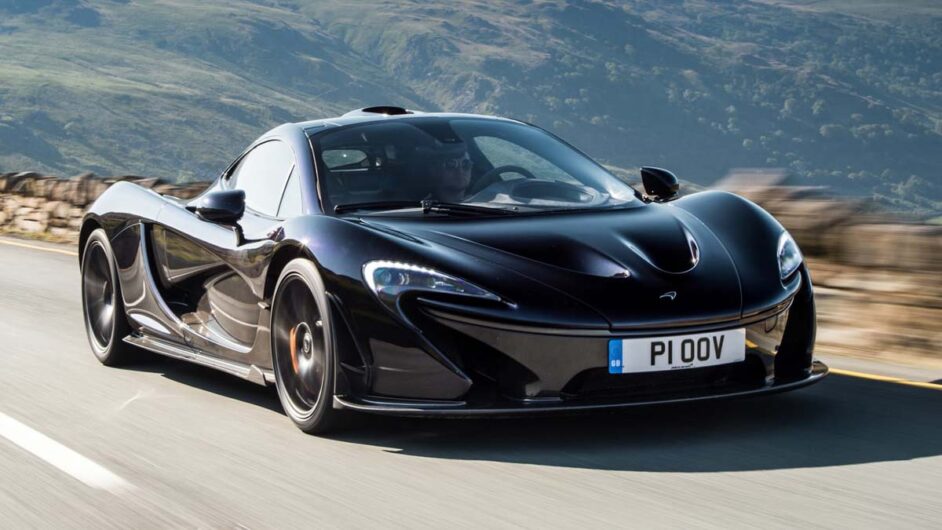
Where the legendary McLaren F1 was a product of an analogue age, the P1 moves the game on in terms of construction (it features a fully carbon Monocage) and its hybrid powertrain. At its heart is the same 3.8-litre V8 you’ll find in other McLarens but for its P1 application it’s been heavily revised and thanks to its twin-turbos it pushes out 727bhp and 531lb ft. Add the electric motor to the equation and it delivers maximum figures of 903bhp and 664lb ft, enough for a 2.8sec 0-100kph time and 0-124mph in just 6.8sec. Quick enough then.
But there’s so much more to the P1 than outright speed. You won’t find any fripperies here, everything on the P1 is designed with one purpose in mind: to enhance its performance. It’s clever and well thought out – witness the lack of anti-roll bars whose duties are taken on by McLaren’s Race Chassis Control active dampers. They provide the car with superb control and responses yet endow it with a remarkably smooth ride, a combination that imbibes the driver with huge levels of confidence in the P1’s abilities.
It looks dramatic, has an F1-inspired carbonfibre and Alcantara-swathed interior and just about the only downside to the whole package is a modicum of lag from the V8 that the electric motor occasionally struggles to disguise. That and its £866,000 price tag and a production run limited to just 375 examples.
3. Porsche 918 Spyder
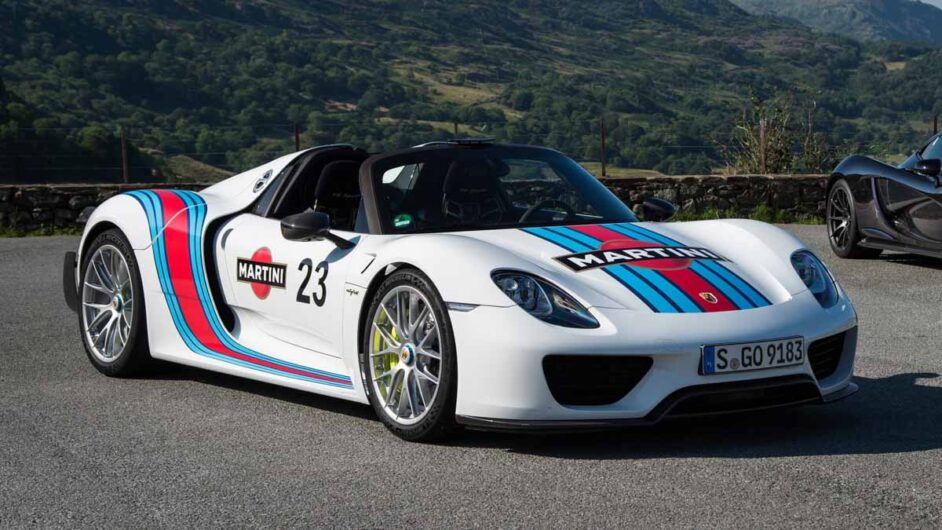
With ‘only’ 599bhp and 398lb ft developed by its glorious 4.6-litre V8 you could be forgiven for thinking the Porsche 918 Spyder would be a little outgunned in this company. Add in its two electric motors though and the 918 is right up there with 875bhp and a staggering 944lb ft of torque, and it’s that latter figure that stops the 918 Spyder from being significantly outgunned by the other two members of the ‘holy trinity’.
It has the performance – 0-100kph in 2.6sec and 0-200kph in 7.2sec – but with the 918 Spyder it’s the seamless way that the four-wheel drive, sublime PDK transmission, twin electric motors and majestic V8 work in combination that makes it such an enjoyable drive. It has impressive eco credentials too – it’ll do 20 miles on pure electric power – but it’s best to remove the roof and revel in that spine-tingling V8 to fully appreciate the 918.
So, it’s quick, has a brilliant drivetrain, but it’s the 918’s dynamic ability that’s equally impressive. A brilliant EPAS set up and perfectly judged PASM dampers allow you to fully exploit the Spyder’s four-wheel drive grip yet it’s also surprisingly adjustable, giving you complete confidence in the car.
As a complete package the 918 Spyder has few peers and if you were going to contemplate using your hypercar everyday then it would undoubtedly be at the top of your shopping list. You’ll need a £1million plus to join the club though.
4. Ferrari LaFerrari
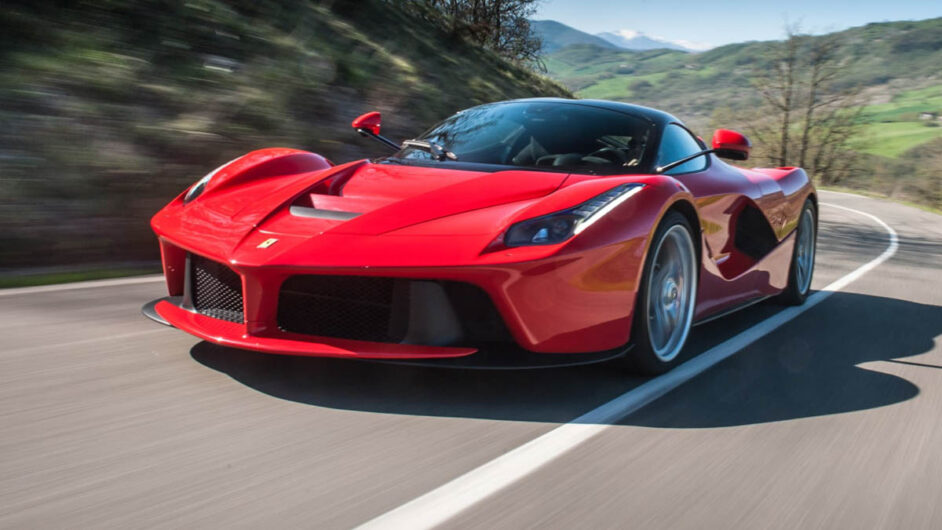
Ferrari’s LaFerrari made up the third prong of the hypercar ‘holy trinity’ and like the Porsche 918 Spyder and the McLaren P1 it used a potent mix of the good, old fashioned internal combustion engine supplemented by an electric motor. Headline figures are mouth-watering. Its 6.3-litre V12 revs to 9250rpm and develops 789bhp and 516lb ft of torque with the electric gubbins adding 161bhp and 199lb ft.
It’s certainly quick enough although Ferrari’s coyness on exact figures seems somewhat ridiculous, quoting times of ‘under 3sec’ for its 0-60mph time and 0-124mph in ‘under 7sec’. The figures are largely academic though as the LaFerrari is dominated by its glorious naturally aspirated V12 with the electric motor being used to torque-fill lower down the rev range.
With active aerodynamics, Brembo carbon-ceramic brakes and a range of F1-derived technology such as F1-trac and an E-diff, the LaFerrari is a hoot to drive with transparent steering and a perfectly judged blend of grip and handling that actually makes it a remarkably driver-friendly hypercar.
Downsides? Not many bar a lack of electric-only running and a £1 million price tag – a figure that’s doubled now all 500 examples have been sold.
5. Koenigsegg Agera RS
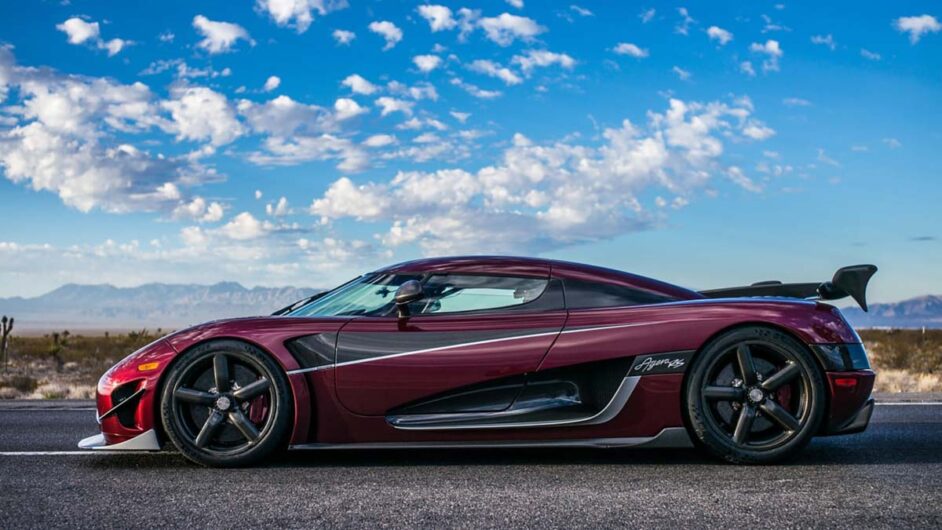
First it was the McLaren F1, more recently there was the Bugatti Veyron Super Sport but now it’s the turn of the Koenigsegg Agera RS. What are we talking about? Well, depending on who you believe, it’s officially the fastest production car in the world with a top speed of 277.87mph. Prior to its historic top speed run in the Nevada desert the Agera RS had also beaten the Bugatti Chiron’s 0-400-0km/h time – at 36.44 seconds it was over five seconds quicker than the much-vaunted Chiron.
SSC currently lays claim to the fastest run with its Tuatara, and Bugatti achieved 304mph at the hands of Andy Wallace in late 2019 with a Chiron, but the car was modified for the attempt, and until it sells a full production version with exactly the same specification, the Agera RS probably still has it. No surprise when it has a 5-litre V8 fed by a brace of turbochargers that develops an impressive 1160bhp and 944lb ft.
Its chassis is carbonfibre and aluminium honeycomb while the shapely body is constructed from carbon and Kevlar. It’s relatively practical for a hypercar too – its removable hardtop can be stowed in the car and there’s an almost usable 150-litre luggage compartment.
Just 25 Agera RSs will be built and like most hypercars if you have to ask how much… yup, that’ll be a cool $2 million plus.
6. Pagani Huayra
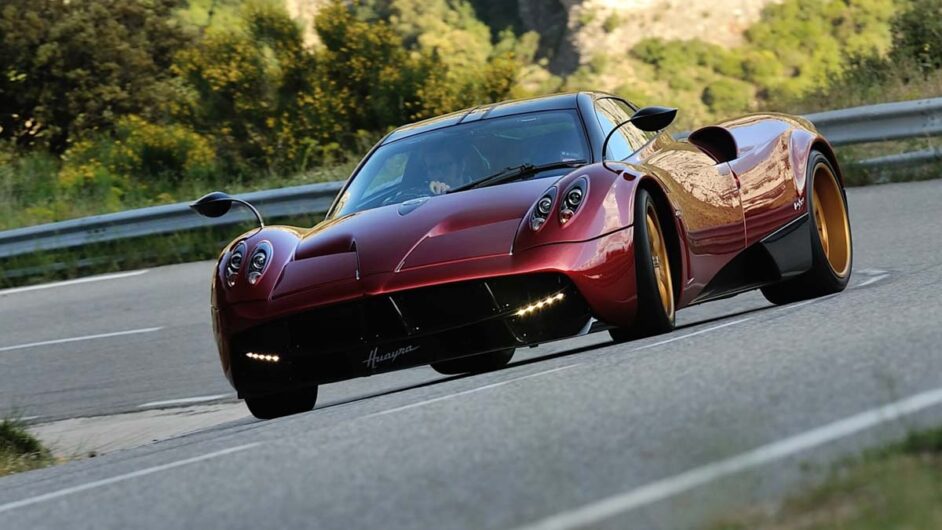
The Zonda was always going to be a hard act to follow but with the Huayra Pagani managed to combine a new turbocharged engine with the suppleness that was always one of the Zonda’s crowning features. The AMG-sourced 6-litre V12 offers 720bhp and 737lb ft and as the Huayra weighs just 1350kg it’s guaranteed to be quick – 0-62mph takes 3.5sec and top speed is 230mph.
There’s real drama to the Huayra’s looks and it’s significantly more cohesive in the flesh than in pictures. Then there’s the slightly bonkers interior, a wonderful amalgam of aluminium, carbon and leather that will no doubt be slightly over the top for some tastes but it’s undeniably dramatic.
Performance, traction and grip levels are simply stunning but in the wrong hands it could be a wayward companion as the transition from grip to slip is relatively brutal and not entirely progressive. The slightly heavy steering rack could also do with being quicker. It’s brutally fast when you want it to be but remarkably refined when you notch the pace back a little, too.
It’s a pretty convincing package, albeit an expensive one at £820,000 and while the automated single-clutch manual might save weight it’s a little clunky at low speeds.
7. Bugatti Veyron
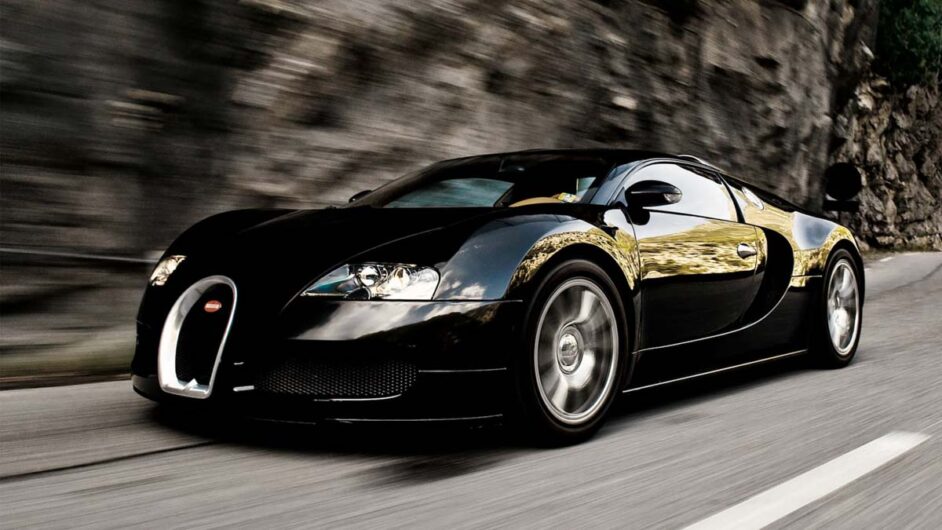
When the VW Group announced it would be building a 1000 horsepower car with a top speed of over 250mph the world thought it had gone mad. The Veyron did have a difficult gestation period but when it arrived in 2005 at a stroke it rewrote the hypercar rule book. Its 1001 metric horsepower equated to 986bhp, good enough for a 2.5sec 0-62mph time and a top speed of 253mph.
Initially the Veyron was destined to have an 18-cylinder unit but eventually this was down sized to a mere 16-cylinders, effectively two 4-litre V8s joined on a common crankshaft and fed by four-turbochargers. There was more to come though as the Veyron Super Sport upped the ante to 1183bhp and until late 2017 it was officially the world’s fastest production car with a 267.856mph maximum.
The Veyron was undoubtedly a technological tour-de-force – it might have been a less emotional machine to drive than those from the established Italian marques but it comprehensively outgunned them in straight-line ability. While perhaps not as engaging in terms of its handling, you could forgive the Veyron for any shortcomings once you’d experienced its mind-bending acceleration.
8. Porsche Carrera GT
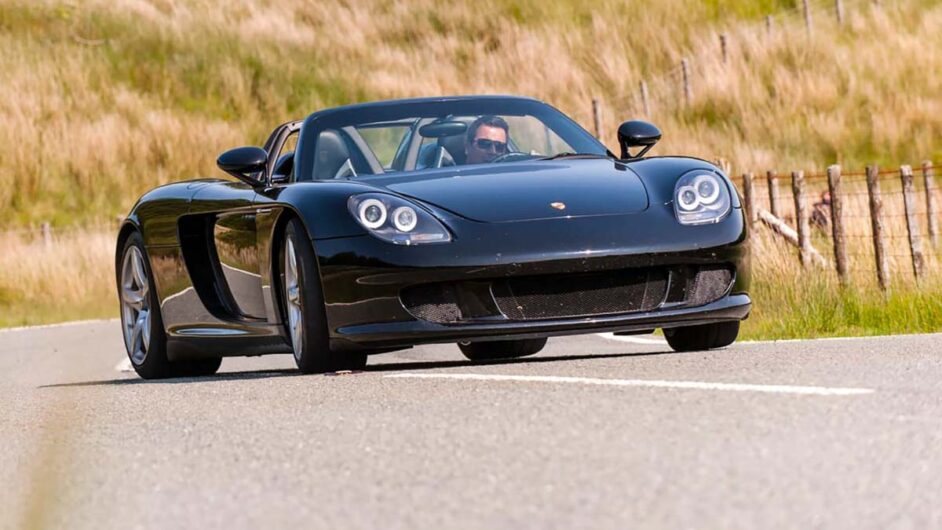
Headline figures of 604bhp and 435lb ft of torque might sound a little conservative when compared to the latest crop of hypercars but when the Porsche Carrera GT was launched back in 2004 they were right up there with the best the world could offer. Its 5733cc mid-mounted V10 was derived from its Le Mans prototype racers and the rest of the car was equally cutting edge.
It had a hand made carbon fibre engine cradle while the springs and dampers are mounted inboard. Stopping was taken care of by carbon-ceramic brakes and that electrically deployed rear spoiler was hugely effective.
With the Carrera GT the overriding impression is one of function over style – if it’s fitted to the Porsche it’s there for a purpose, and that purpose is to make the GT faster. The cabin lacks the excesses of some rivals but the pedals and driving position are just about perfect, although its clutch action is unforgiving at low speeds.
Drive the Carrera GT hard though and it will reward with a forgiving chassis and communicative steering and that V10’s throttle response is utterly bewitching. The further and the faster you drive it, the more you’ll find layers of ability that weren’t apparent on first acquaintance and a level of dynamic polish that set the hypercar standard.
9. Ferrari Enzo
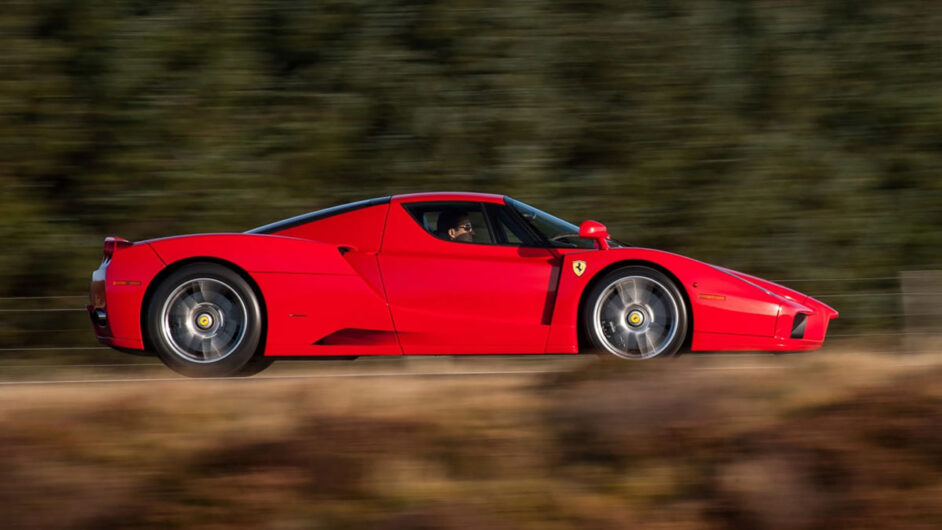
Ferrari has a glorious lineage and the Enzo was the distilled essence of its V12 heritage. It was the last of the line of naturally aspirated V12 Ferraris and was a glorious swansong, developing 650bhp at 7800rpm and 485lb ft at 5500rpm. In a machine weighing 1480kg it was good enough for a 3.1sec 0-100kph time and a top speed of 350kph.
If the engine was somewhat old school with no forced induction or electrical assistance to get in the way then the rest of the car was bang up to date with a carbonfibre body, F1-style electro-hydraulic transmission with steering wheel-mounted shift lights and carbon ceramic brakes.
But it was the way the Enzo went about its business on the road that was most impressive. The engine’s spine-tingling in both its noise and throttle response and it feels monumentally rapid. This is a sensation enhanced by the transmission which, when in race mode, thumps you in the back as each new ratio engages and is violent enough on down changes to send the car sideways.
Its front-end is tenacious and while it can snap into oversteer on the limit it’s not vicious and can be caught without breaking into too much of a sweat even if its steering isn’t quite as telepathic as its Carrera GT contemporary.
10. McLaren F1
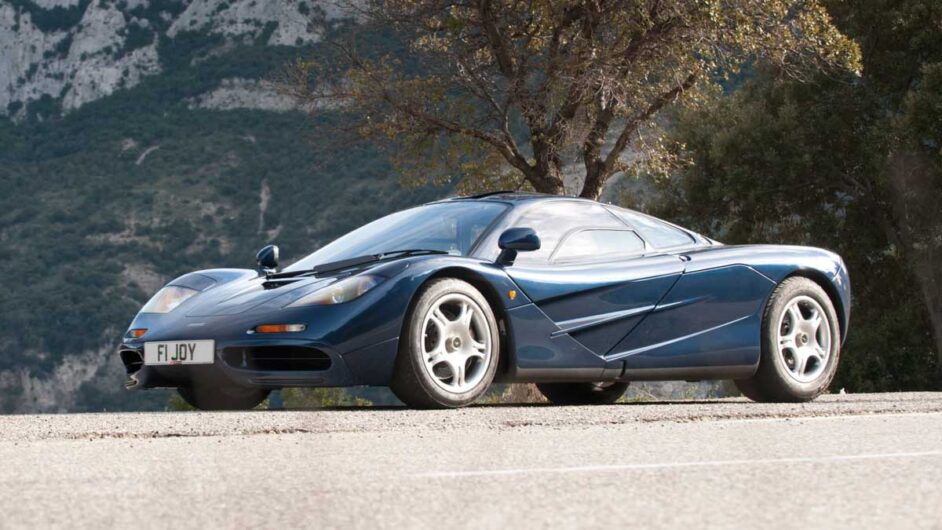
The original, and some might argue, still the best, it’s almost impossible to believe that the McLaren F1 is now over 25 years old. It was designed to be the world’s ultimate road car and Gordon Murray’s design brief was exacting with a fastidious weight-saving philosophy. It’s virtually devoid of driver assistance systems – there’s no power steering or traction control – and it’s very much an analogue machine compared to today’s digital offerings.
Initially Honda power was expected which would have been a good tie-in with the McLaren Formula 1 team but Honda declined to design an engine so Murray turned to BMW who developed a 6064cc V12 that developed 618bhp and 480lb ft of torque. The engine was 16kg heavier than Murray wanted… but 14 per cent more powerful.
Its styling was relatively conventional but it was certainly slippery – good enough to allow that V12 to famously propel it to its 240.1mph fastest car in the world title. By today’s standards the F1 feels a little soft in its suspension but the flip side is an excellent ride quality and while you’ll have seen plenty of pictures of McLaren F1s being driven sideways for the camera it was a very tricky car to drive at the limit.
That doesn’t take away from its legendary status though, this was the original hypercar and one that has stood the test of time better than most and can still teach today’s machinery a thing or two.
11. McLaren Senna
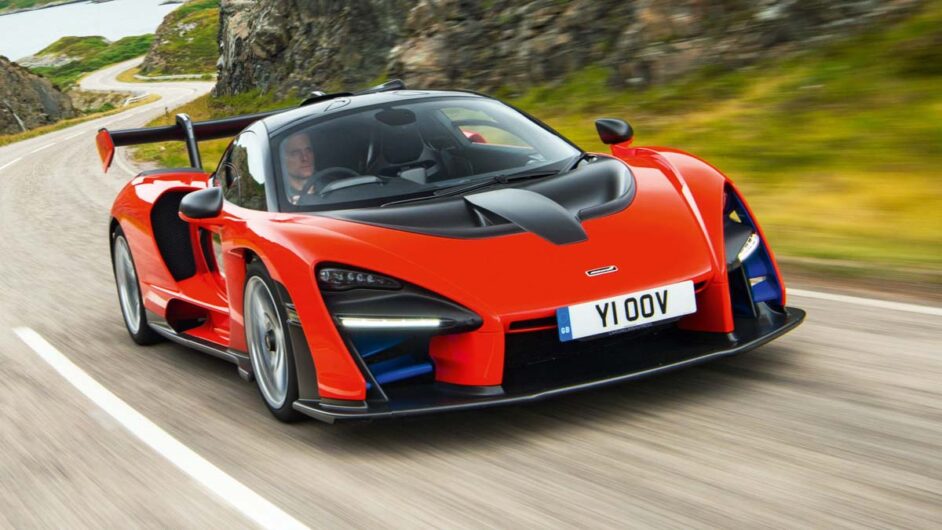
The Senna is a different type of hypercar to many of the others on this list. Where some aim for top speed and others for pure theatre alone, the Senna was developed first and foremost to be a track car – and given that the company saw fit to give it the name of one of the greatest ever Formula 1 drivers, it didn’t go about the process by halves.
> McLaren Senna review – the ultimate track driving experience
We’ve seen track-orientated supercars and hypercars before of course, such as the XX line of models released by Ferrari, but the Senna remains road legal. Slotting into McLaren’s Ultimate Series, much like the P1 before it, and the Elva and Speedtail that have joined it, its low weight and enormous levels of downforce have been designed to maximise its abilities on a circuit.
McLaren claims up to 800kg of downforce at 155mph, well shy of its 208mph top speed, while a dry weight of 1198kg makes it roughly equivalent to a Lotus Exige – but at 789bhp, with more than double the power. It’s intense, involving and very capable… though it’s fair to say it also doesn’t quite have the bedroom wall aesthetic appeal of some of the other cars on this list…
12. Ferrari SF90 Stradale
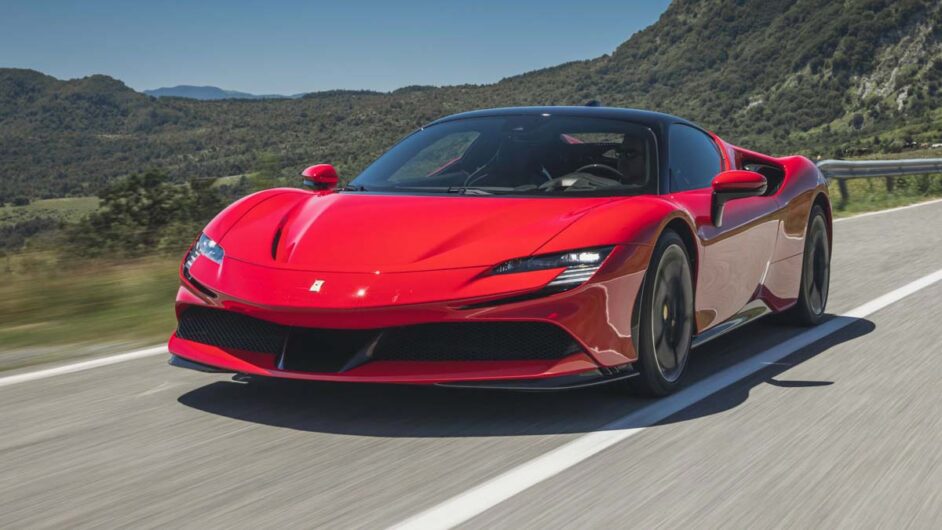
Ferrari’s latest hypercar is a little different from its previous models. The lineage stretching from 288 GTO to LaFerrari was always slightly separate from Ferrari’s production cars, with limited numbers (even if the F40’s run wasn’t that limited) and a real pioneering feel to the technology used within. The SF90 Stradale though is a conventional production model, to be sold alongside F8s and F12s.
If this sounds like downplaying the SF90 though, that’s very much not the case. The fact you can now buy LaFerrari-style technology and performance in a car that costs mere hundreds of thousands rather than millions (it’s £375,000) is quite remarkable, and indicative of the rapid development in this sector in recent years. No other hypercar here is so (relatively) accessible.
Not many are as accessible to drive either – in many respects, it’s simply like an even faster F8 Tributo, and is as brilliantly resolved in almost every area as that comparison makes it sound. Therein also lies a problem, because for all its technology the SF90 is no more involving and that extra performance window is almost impossible to access on the road. Perhaps then what makes the SF90 a significant hypercar isn’t its ability, but that it leads us to question the real value of these cars as driving machines. That might be a question Gordon Murray ends up offering the answer to…
Best hypercar top 10
- Bugatti Chiron
- McLaren P1
- Porsche 918 Spyder
- Ferrari LaFerrari
- Koenigsegg Agera RS
- Pagani Huarya
- Bugatti Veyron
- Porsche Carrera GT
- Ferrari Enzo
- McLaren F1
- McLaren Senna
- Ferrari SF90 Stradale
This article originally appeared at evo.co.uk
Copyright © evo UK, Dennis Publishing

